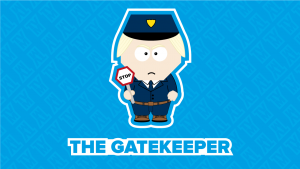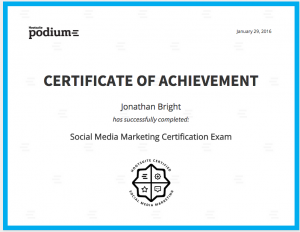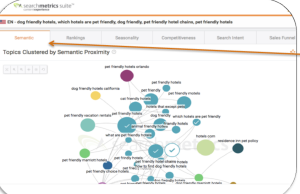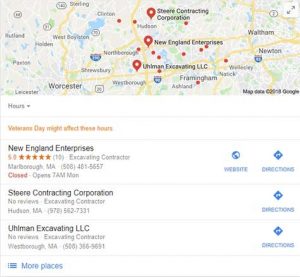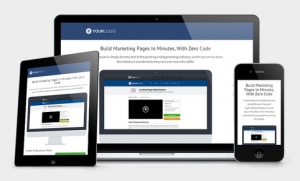How often do you see other users on social media post content where they clearly didn’t prepare it properly? How often have you struggled with this yourself?
We all have tweets we regret and posts we edit or delete after publishing when we can. Sometimes, we just make mistakes, but that doesn’t have to be the case as often if we take the time to prepare before publishing.
This list post includes seven tasks you need to complete to make sure your content is accurate, effective and well-received. A summary of these items can be found at the end of the article for your convenience.
1) Read the article you’re sharing from someone else and proofread the article you wrote
I know it takes extra time to read someone’s article, but it is definitely worth it. Why share an article, knowing the risk that it could be about something completely different than what you expected? Headlines and even headings can be deceiving, and you might end up sharing something from someone who has opinions you completely disagree with.
Don’t make the mistake of sharing something that could go against what your business or brand wants to be known for. At the very minimum, scan the article for headings and text with emphasis. Find something in that article that you can mention as a preview in your social content.
As for your own article, is it ready to be shared? Does your social update content match what your article is about? Make sure your blog and social content are in sync before you publish.
Your Turn!
- How often do you share content from other contributors in your field or industry?
- Do you read or scan the articles before you share them?
- Are you checking your own content accuracy before you share?
Leave a comment with your answers!
2) Research the proper posting etiquette for each platform
Are you paying attention to the ideal length for each social platform’s content? There really are lengths that work more than others. Buffer provides a thorough guide for social and more in their article: The Optimal Length for Every Social Media Update and More. If you’re having trouble keeping track of lengths, this article is your solution.
Also, it’s important you publish content that is uniquely designed and formatted for each platform. What works for Facebook doesn’t work for Google+, and what works for Twitter pretty much just works there. If you’re using a social scheduling tool, you should at least try to create custom content for each platform you’re on. Sometimes, time and resources aren’t available, but in that case, make sure the content you mass publish works as much as possible with each platform.
You also need to be paying attention to how accurate, controversial and relevant your content is. Publishing content that is inaccurate can damage your reputation because it shows you didn’t do your research and/or don’t care about checking.
Your reputation is also at risk when you send out something controversial. If you’re trying to create viral content or just want to get people’s attention, be careful. Sometimes, being controversial can lead to lots of attention, but much of the time, that attention is negative and turns out badly for the company. Ask any company that sent out insensitive tweets during a crisis. Be careful with this approach and find alternate methods when you can…
Is your content relevant to your business and its mission? I came across the Twitter account for a family member’s business recently. It’s a relatively active account, but the business is about one thing and the tweets are about something completely different. The company sells B2B products. It’s not a marketing firm, so why would all their tweets be about marketing? Keep your content relevant to your industry. Keep it focused on your business goals and social media strategy. You want to build influence in your own industry, not someone else’s.
Your Turn!
- Do you share the same content in the exact same form on multiple platforms?
- What’s keeping you from customizing per platform? Time? Resources? Willingness?
- Is your content accurate, safe and relevant?
Leave a comment with your answers!
3) Research your hashtags
Too often I see the hashtags I follow being used for other reasons besides what they’re meant for. I fall prey to using the wrong hashtag every now and then, and it backfires on me almost every time. Some hashtags are pretty obvious. #SocialMediaMarketing is a good example. On the other hand, how do you know what #smm is for if you don’t check first? Even when you think a hashtag is obvious, it could be too obvious. I refer to ones such as #SocialMedia and specific platform names (#Twitter, #Facebook, etc.). These are great to use when you’re talking about these topics in a marketing sense, but again, be careful.
The social media platform names are used by anybody and everybody, marketing or otherwise, when the user wants to mention them. They could be talking about Facebook marketing, but more often than not, the person is simply a casual user who could be complaining about the platform or something else. This overwhelms the feed for that hashtag, giving your tweet a higher chance of being missed or ignored.
When you want your tweet to get noticed, use an existing but relevant hashtag that your target audience is using. Don’t create tweets using hashtags that no one else is using unless you’re ready to work hard to make it a trend. I’ve seen several Twitter chats that use their own unique hashtag. That’s a great example, but again, you have to be patient and advertise heavily to build a hashtag’s influence.
Your Turn!
- What are you doing to make sure the hashtags you’re using are appropriate and helpful?
- Do you use any tools to keep track?
- Are you trying to create a unique hashtag for your business? What is your strategy?
Leave a comment with your answers!
4) Know your audience
Before you even think of sharing anything on social, you need to have established, complete examples of who your audience is, what they care about, and how you can help them while achieving your own business goals. These are known as social buyer personas. Heidi Cohen has an article on this called Social Media Buyer Persona – 10 Questions to Ask that’s worth checking out. I also highly recommend using HubSpot’s article, The Science of Building Better Buyer Personas, to get through the creation process.
Your content is irrelevant and wasted if you don’t know who you’re talking to and what they’re looking for. You could have a brilliant blog post about something revolutionary for your industry. It could be exactly what your audience wants to see… Or it could be completely missed or ignored.
Don’t let your hard work go to waste. Do your research, create your personas, and publish the content that will bring you the results you’re looking for.
Your Turn!
- Have you done your research before publishing on social?
- What do you do to create your own social personas?
- Do you apply your buyer personas to your social efforts? How?
Leave a comment with your answers!
5) Check your hyperlink(s)
Most users on each social platform share a hyperlink with the vast majority of their content. Twitter is a huge hyperlink-sharing platform.
I love going through my Twitter lists and checking out what my chosen Marketing Influencers are sharing. Recently, one of the leaders in my field published a tweet about something that sounded very interesting, and I wanted to learn more. I clicked on the link with the expectation that I’d be directed to the article mentioned.
Was I led to that article? No. The link led to a “Page Not Found” on the author’s website. I was quite disappointed. I took the extra step and notified the influencer of the problem, but you shouldn’t expect that to happen often. Most people will just get irritated and move on. They’ll give up on your article and maybe even hesitate to click on any future links from you if a broken link happens too often.
Check your links before you share them. If you use a link shortening service, such as Bitly, it can be easy to select the wrong link. Take a second to double check.
I’ve learned that the hard way myself. My first tweet ever had the wrong link. I even made the mistake again recently. Even though I shared the correct link quickly afterwards, some damage was done. People had clicked on my incorrect link. They were led to the wrong place. I don’t want that to happen again, and I’m sure you don’t want to go through the same thing.
Your Turn!
- How often do you share links on social?
- Do you have a system in place to ensure the correct link is shared?
- Did you ever have the wrong link go out on social? What did you do about it?
Leave a comment with your answers!
6) Give credit where it’s due
When you’re sending out that tweet with an article someone else wrote, you should always use the @mention to give them credit. If the author isn’t on whatever platform you’re using, cite the hosting website. Sometimes, it may even be appropriate to write out the author’s name if you can’t link to them directly. This might not work on Twitter where there’s a rather restrictive character limit, but I recommend taking the time for it on other platforms, such as Facebook and LinkedIn. At minimum, let your audience know it is not your work in order to avoid getting in any trouble.
If you don’t tell people where you’re getting your information from, you’re essentially committing social plagiarism. While the link would lead to the author’s article, people who simply see your tweet/post will assume it’s your article.
Give the author the credit s/he deserves. If you have the space, include the website source that hosts the article. You not only give them this credit, you build a relationship with that author/host. You appear legitimate to your fans and followers. People will respect your efforts more than if you just took the mention-free approach.
I’ll say it right now that I almost never click on a link in a tweet if the user doesn’t cite or mention that it’s his or her article. I want to know what I’m clicking on, especially if it’s a shortened link through bitly or otherwise, so do your audience a favor and let them know who wrote the piece. It’ll help you out, too, in the long run.
Your turn!
- Have you seen users who (almost) never cite their source with an official mention?
- What do you do when that happens? Do you still follow them? Do you hesitate to click?
- How would you respond if someone shared your content but didn’t give you credit on social?
Leave a comment with your answers!
7) Proofread your text
There’s a particular Facebook page I follow for news stories in my area. Their sense of spelling and grammar is deplorable. There’s no way they aren’t aware of it either. They know people want to follow the news, so they rush through every post without any proofreading involved. They don’t even take the time to fix any errors afterwards even though Facebook gives them that option.
Don’t be like that Facebook page. Proofread the meat of your post for errors of any kind. Even a tweet can have issues you ought to avoid, such as having two hashtags next to each other so that neither of them works. Also on Twitter, don’t sacrifice spelling for the sake of making more room. If you can’t fit the full text in one tweet, make more than one or cut it carefully.
Make sure your audience can understand what you’re sharing. Otherwise, you’re wasting your time because they won’t click on your link or do anything with your content that you want. This may even lead to a negative effect on your following and legitimacy.
Your turn!
- Do you proofread before you publish?
- How do you ensure that your text is ready to be published?
- Have you ever published a tweet or post that made no sense at all? Was there any backlash?
Leave a comment with your answers!
———
Summary of items mentioned:
- Read the article you’re sharing from someone else and proofread the article you wrote
- Research the proper posting etiquette for each platform
- Research your hashtags
- Know your audience
- Check your hyperlink(s)
- Give credit where it’s due
- Proofread your text
(197)
